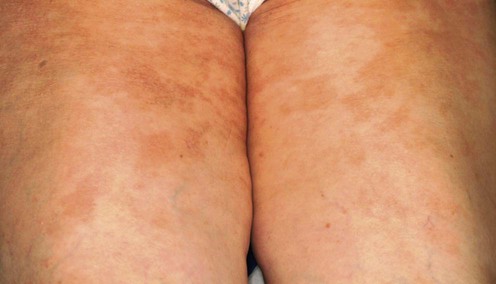Immunohistochemistry cannot differentiate between the two forms.
Parapsoriasis

Specific investigations
Get Clinical Tree app for offline access
Small plaque parapsoriasis

Immunohistochemistry cannot differentiate between the two forms.
Parapsoriasis

Specific investigations
Get Clinical Tree app for offline access
Small plaque parapsoriasis
